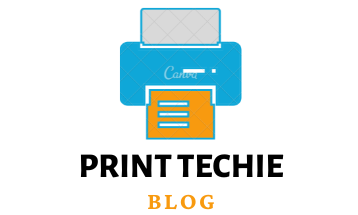Have you ever wondered if the vibrant world of sublimation printing extends to the sturdy surfaces of ceramic tiles? The question is intriguing, sparking curiosity among DIY enthusiasts and professional printers alike. Can the heat and pressure of sublimation transfer vivid designs onto such a hard material?
The answer is a resounding yes. Sublimation on ceramic tiles is not only possible but also produces stunning, long-lasting results. This technique allows for the transfer of high-quality images, creating personalized and decorative pieces that stand out in any setting.
Dive into the details with us as we explore the ins and outs of sublimating on ceramic tiles. Renowned experts in the field, like Dr. Emily Stone, a leading authority in sublimation printing, have shared insights that elevate this craft. Join us as we uncover the potential of sublimation on ceramic tiles, transforming ordinary surfaces into extraordinary artworks.
The Process of Sublimation on Ceramic Tiles
Sublimation on ceramic tiles involves a special process where sublimation ink is transferred onto the tile through heat and pressure. The key is to use tiles coated with a polymer layer that can absorb the sublimation dye, ensuring the image is not only transferred but also sealed into the tile for a durable, long-lasting finish.
Choosing the Right Materials for Sublimation
For successful ceramic tile sublimation, selecting the right materials is crucial. This includes not only the right type of coated ceramic tiles but also high-quality sublimation inks and a reliable heat press. Ensuring compatibility among these elements is essential for achieving vibrant, sharp, and enduring results.
Creative Applications of Sublimated Ceramic Tiles
Sublimated ceramic tiles open up a world of creative possibilities. From personalized kitchen backsplashes and bathroom tiles to custom coasters and wall art, the only limit is your imagination. These custom tiles can add a personal touch to any space or serve as bespoke gifts for any occasion.
Read: Can You Sublimate on Nylon Fabric?
Step-by-Step Guide to Ceramic Tile Sublimation
Ceramic tile sublimation transforms ordinary tiles into personalized works of art. Here’s how to do it:
- Design Preparation: Begin by creating your design using graphic software. Ensure it’s high-resolution to achieve sharp, vivid prints. Mirror the image, as it will be transferred in reverse onto the tile.
- Print Your Design: Using a sublimation printer, print your mirrored design onto sublimation paper. Ensure the ink is fully dry before proceeding to prevent smudging.
- Select the Right Tile: Choose a ceramic tile coated with a special polymer layer. This coating is essential for the sublimation ink to adhere properly.
- Heat Press Setup: Preheat your heat press to the recommended temperature, usually around 400°F (204°C). The exact temperature may vary based on your equipment and tile size.
- Preparation of the Tile: Clean the surface of the ceramic tile with a lint-free cloth to remove any dust or debris. Any particles left on the tile can result in imperfections in the transferred design.
- Aligning the Design: Place the printed sublimation paper on the tile, with the printed side facing down. Secure the paper in place using heat-resistant tape to prevent it from moving during the transfer process.
- Sublimation Process: Place the tile in the heat press, ensuring it’s properly aligned. Press the tile for about 4-6 minutes, depending on your equipment and tile size. The time may need adjustment based on trial and error.
- Cooling Down: After pressing, carefully remove the tile (it will be hot) and allow it to cool. The cooling process is crucial for the design to set properly.
- Peel and Reveal: Once the tile is cool to the touch, gently peel off the sublimation paper to reveal your vibrant, transferred design.
- Finishing Touches: If desired, apply a protective coating to enhance durability, especially for tiles that will be used in high-traffic areas or exposed to moisture.
Following these steps ensures a successful sublimation process, turning plain ceramic tiles into personalized decorative pieces or unique gifts.
Tips for Perfect Sublimation Results
For impeccable sublimation results, attention to detail is key. This means using the right temperature and pressure settings, ensuring the tile is properly aligned, and avoiding common pitfalls like moisture in the paper. With these tips in mind, achieving stunning sublimated tiles becomes an achievable goal.
Conclusion: Unleashing Creativity with Ceramic Tile Sublimation

Sublimation on ceramic tiles not only offers a unique way to customize and decorate but also opens up new avenues for creativity and personal expression. Whether for home décor, commercial spaces, or personalized gifts, the potential of sublimated ceramic tiles is only limited by the imagination.
Read: How long does 100ml of sublimation ink last?
FAQs
Can any ceramic tile be used for sublimation?
Not all ceramic tiles are suitable for sublimation. You need tiles specially coated with a polymer layer that can absorb and bond with sublimation inks.
What type of printer is needed for tile sublimation?
A sublimation printer equipped with high-quality sublimation ink is required to transfer designs onto ceramic tiles effectively.
How durable are sublimated ceramic tiles?
When done correctly, sublimated ceramic tiles are highly durable and resistant to fading, making them suitable for both indoor and outdoor applications.
Can sublimated tiles be used in high-moisture areas?
Yes, sublimated tiles can be used in high-moisture areas like bathrooms and kitchens, as the sublimation process ensures the design is sealed beneath the surface.
Is special equipment required for ceramic tile sublimation?
Yes, in addition to a sublimation printer, you’ll need a heat press capable of providing consistent heat and pressure to transfer your design onto the tile.

